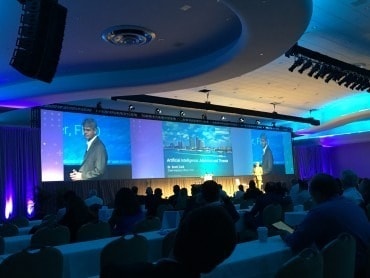
Companies looking to experiment in either event-driven architecture or edge environments can have it all, especially if they’re willing to tackle both simultaneously.
Computing needs to happen where it’s most beneficial to the business. In the centralized computing past, that was an office server room (or closet), but as businesses became distributed, in terms of who they serve and where their employees operate from, that model moved toward the cloud. Now, as remote working becomes the norm, old operating procedures get turned inside-out, and companies are eager to extract more insights when and where they happen, edge computing has gone from nice-to-have to necessity.
Which frightens many of the CTOs, CIOs, and line managers responsible for making these efforts happen. They fear what might go wrong—what happens if there’s no easy way to integrate edge data with all the other databases they’re juggling? How can they operate efficiently in multiple fragmented, inconsistent environments with the risk of vendor lock-in? How do you maintain systems where there’s no IT talent?

The fears might be warranted, but when paired with event-driven architecture (EDA), edge offers exciting new opportunities without the hassles that came with edge computing deployments of even a few years past.
Three types of EDA-driven edge computing
At its core, EDA is a type of software development that creates applications that asynchronously communicate with other parts of the system—or integrate with external applications—via events. It’s a dramatic departure from the monolithic applications of the past, and even for companies up-to-speed on microservice deployments, EDA presents new challenges.
Red Hat, a leading provider of integrated edge and EDA platforms, defines three key areas where edge computing and EDA might overlap:
- Enterprise: A core data store is used to extend an application to edge computing resources. An example with EDA is a customer scanning a product during self-checkout, which creates an event to connect this order to their rewards account, which creates another event to further personalize offers sent to their inbox.
- Operations: Typically involve industrial applications and the need to process data on-site, which often comes in the form of on-machine IOT assets that trigger events to begin predictive maintenance processes before an asset’s performance degrades.
- Provider: A network, typically delivered by a telecommunications company, that brings reliability and performance to environments once unreachable to devices. When combined with EDA, this could mean a multi-access edge computing (MEC) center adapting to customers’ bandwidth-hungry applications in remote locations.
When combined, EDA and edge have enormous opportunities to put scalable, consistent, and real-time computing into parts of a company that was otherwise inaccessible. If an edge device goes offline, it can continue queuing up events to send as soon as it’s back online, giving companies unprecedented flexibility and confidence they’ll unlock new streams of data and insights.
Turning what-ifs to wins with EDA
Building a robust event-driven architecture for your edge environment doesn’t have to be a fear-ridden process. Here are a few key areas to investigate when investigating platforms, integrations, and tooling that will impact the process and end result.
Lock-in: EDA for edge computing means using multiple vendors to provide complete coverage from the first event on the ground to end results in your applications or data stores. One common solution is using services or solutions with a foundation in open source. Pairing the open-source community’s emphasis on interoperability with technical backing from a major cloud provider often equals a flexible architecture with “swappable” components that can change as often as your business case for edge computing.
Integration: Because the “moving parts” of an EDA are event data transferring between producers and consumers, integration is often more straightforward than managing complex payloads in a hybrid environment. Still, look for platforms like Red Hat Integration that use an API-first approach, leverage change data capture (CDC) for faster time-to-market, and use cloud-native technology like containerization.
Management and maintenance at the edge: IT talent can’t stay on the edge. Sometimes they can’t even get there without a harness or a helicopter. With an EDA, you can manage every part of your infrastructure—including your edge devices, which need to operate independently or without connectivity at times—using one common set of tools. Both Kubernetes and Red Hat Quay simplify these challenges with automation, CI/CD pipelines, encryption for security-conscious edge environments, and more.
Companies looking to experiment in either event-driven architecture or edge environments can have it all, especially if they’re willing to tackle both simultaneously. While edge is a new frontier for many businesses, it’s also a ripe opportunity for technological experimentation. Once they’re reeling in the unique benefits of real-time data from new sources, they’ll start seeing previously unexplored ways to use events as the backbone for a common, horizontal hybrid cloud that eliminates fear and starts solving tomorrow’s problems.







